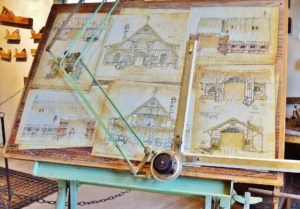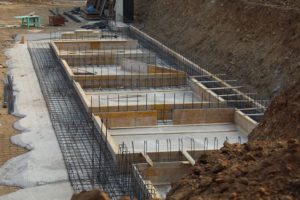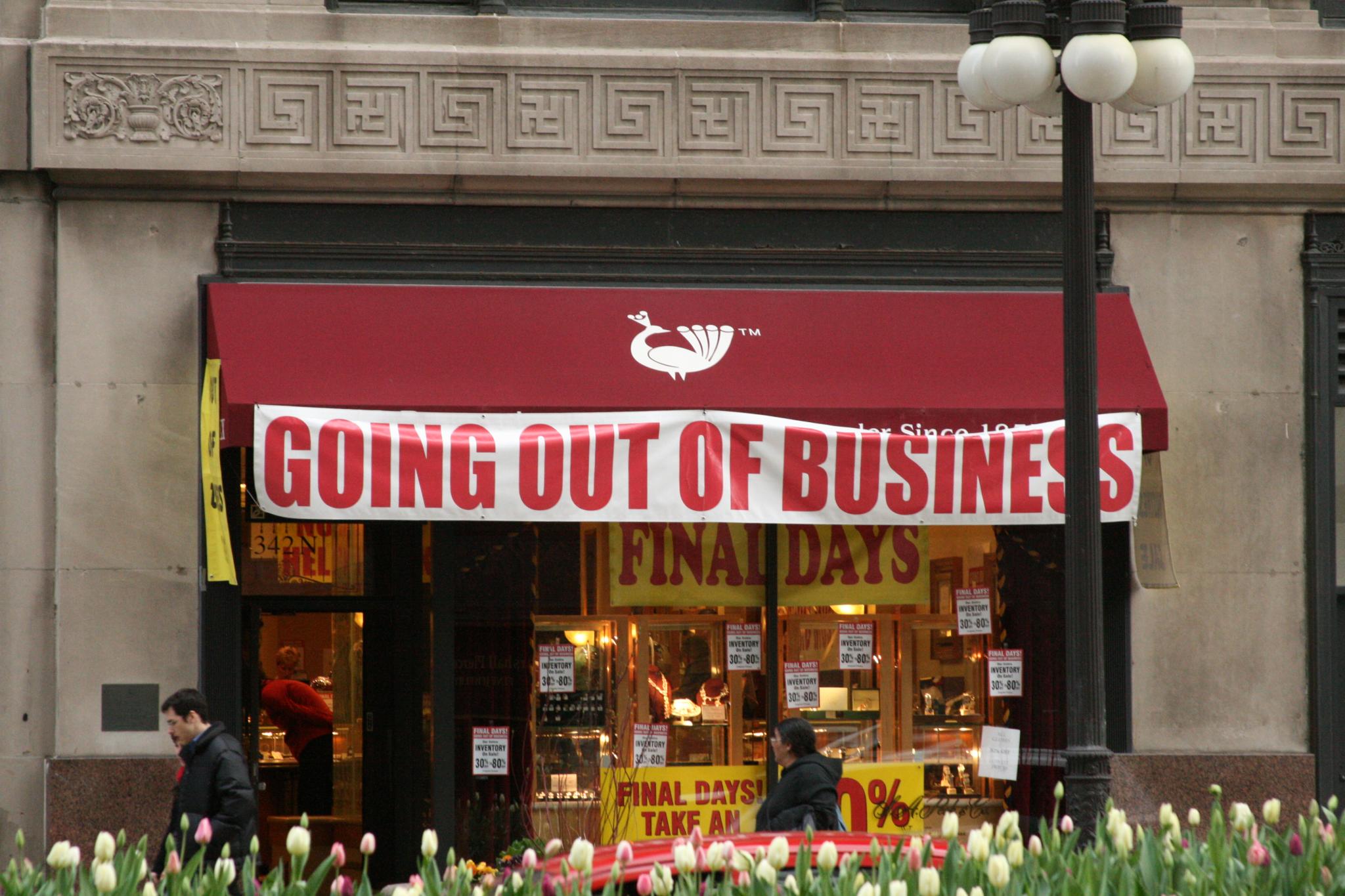Action Is Required for Building Anything
It doesn’t matter if we are building a home, a business or a life…they all require physical action. Planning is critical but not enough.
At a lunch meeting with my financial assistant (my sister) earlier this week we were discussing what is needed to move closer to achieving the company’s goals. This conversation confirmed what I already knew. By nature, I am a planner, a dreamer and a recovering perfectionist. I have lots of ideas and plans, all great ones too, no doubt. 😊 But it takes more than just plans.
The necessary thing needed to build the business, just like a building, is action. You can’t live in a blueprint. The same is true for a business. You have to move beyond planning. You have to do the first next thing.

When doing a construction project, I understand the order of the process – to start, proceed and finish. I asked myself why the physical construction comes naturally but I struggle with building a business. I have come up with a few reasons for this:
- It’s hard for me to delegate – I know that I suck at it. People who know me know that I suck at it. This leaves me with two options; do everything myself and do less or share the shovels. I listened to a Story Brand podcast a few days ago that pointed out that successful entrepreneurs don’t try to do everything by themselves.

- I have a broken people meter – I was thinking about the discussion with my sister and came to the realization that part of the delegation problem is that my people meter is broke or maybe I just don’t have one. So, I need to incorporate the help of people who have good people meters into the process of finding the right people to delegate to.
- My “to do list” is too long and I like lists – When the list of things that need to be done is too long we become overwhelmed. Being pulled in so many different directions leads to confusion and causes a lack of clarity. Trying to spin too many plates doesn’t move things forward it just makes us dizzy. Trying to do too many things causes chaos. I don’t have the time to do everything on my list. We need a plan for this but if things are going to change there needs to be some action.
-
Recovering perfectionist – Finding the separation between perfection and excellence is tricky. This is a very fine line. Having been a perfectionist for years it is difficult to not cross back into perfection. Perfection causes inaction. It slows down all the processes and makes it difficult to leave the planning and start the doing.
 Moving forward with the first next step I must narrowly clarify excellent delegation.
Moving forward with the first next step I must narrowly clarify excellent delegation.
Just like I can’t drive more than one nail at a time when doing physical construction, the same is true when building a business or a life. If I don’t quit trying to perfect the plans and start swinging the hammer I will never get anything built.


 Moving forward with the first next step I must narrowly clarify excellent delegation.
Moving forward with the first next step I must narrowly clarify excellent delegation.
 I decided to write about this core value while reading “The Seventh Most Important Thing”, by Shelley Pearsall. In the story Mr. Hampton leaves a hand-written message for Arthur on a piece of cardboard,
I decided to write about this core value while reading “The Seventh Most Important Thing”, by Shelley Pearsall. In the story Mr. Hampton leaves a hand-written message for Arthur on a piece of cardboard,  It has been my experience when building a building that people have a dream of what they envision the finished project to look like. The problem is, they don’t know how to get that dream from their head to a physical structure. This is where vision comes in. The vision is the process of taking the imagined and turning it into reality. This provides a clear and intentional plan for building the dream.
It has been my experience when building a building that people have a dream of what they envision the finished project to look like. The problem is, they don’t know how to get that dream from their head to a physical structure. This is where vision comes in. The vision is the process of taking the imagined and turning it into reality. This provides a clear and intentional plan for building the dream.

 The excitement that comes with the beginning of a project starts to wain after a while. You just want to have your project, whether it is a big renovation or a small repair, done. You want to get your life back to normal as quickly as possible. Regular life is disrupting enough without a construction project, but to have trades people coming in and out of your home or business periodically and/or unexpectedly wasn’t a part of that initial excitement.
The excitement that comes with the beginning of a project starts to wain after a while. You just want to have your project, whether it is a big renovation or a small repair, done. You want to get your life back to normal as quickly as possible. Regular life is disrupting enough without a construction project, but to have trades people coming in and out of your home or business periodically and/or unexpectedly wasn’t a part of that initial excitement.
 Projects rarely go the way the customer or the contractor think they should or would like, but this doesn’t mean that they need to be disappointing for either. The key is to plan and learn all that you can before you get too far into the process. If you will do this, you will decrease your chances of unrealistic and increase your chances of a wow project in the end.
Projects rarely go the way the customer or the contractor think they should or would like, but this doesn’t mean that they need to be disappointing for either. The key is to plan and learn all that you can before you get too far into the process. If you will do this, you will decrease your chances of unrealistic and increase your chances of a wow project in the end.
 At an early age we begin the process of planning our lives. We have an image of how our life is going to look, what we are going to do, who is going to enjoy it with us, etc. Sometimes those plans are well thought out and designed. They come with pages and pages of blueprints including all types of details, complete with engineering calculations. Some plans are more the ‘scribbled on a piece of scrap paper idea’. Either way we have that picture of what we think our life should be.
At an early age we begin the process of planning our lives. We have an image of how our life is going to look, what we are going to do, who is going to enjoy it with us, etc. Sometimes those plans are well thought out and designed. They come with pages and pages of blueprints including all types of details, complete with engineering calculations. Some plans are more the ‘scribbled on a piece of scrap paper idea’. Either way we have that picture of what we think our life should be.


 It is common for people to start a business without a plan. Generally, someone has learned a trade or a craft and for whatever reason they decide to go into business on their own. Most of the time they have given little, if any, thought to business structure. They show up every day working hard and then…surprise, you owe some taxes and haven’t saved any money to pay them. They needed a plan, a blueprint for building the business.
It is common for people to start a business without a plan. Generally, someone has learned a trade or a craft and for whatever reason they decide to go into business on their own. Most of the time they have given little, if any, thought to business structure. They show up every day working hard and then…surprise, you owe some taxes and haven’t saved any money to pay them. They needed a plan, a blueprint for building the business.

 waking up every morning and knowing there are countless possibilities and opportunities to help people build their dreams. I mean I really love my life. Is it perfect? No, not by a long shot. Are there bad days? Sure. But perfection isn’t a requirement for loving the chance to fulfill your purpose.
waking up every morning and knowing there are countless possibilities and opportunities to help people build their dreams. I mean I really love my life. Is it perfect? No, not by a long shot. Are there bad days? Sure. But perfection isn’t a requirement for loving the chance to fulfill your purpose. As a builder I really connect with God as a designer/builder. He has drawn a blueprint for each and every one of us. He has made all of those plans different. Some may be similar, but every single one is unique. It is our job to learn to read our own blueprints and start swinging the hammer and driving the nails to build who we were designed to be.
As a builder I really connect with God as a designer/builder. He has drawn a blueprint for each and every one of us. He has made all of those plans different. Some may be similar, but every single one is unique. It is our job to learn to read our own blueprints and start swinging the hammer and driving the nails to build who we were designed to be. 
 depressing. Even when it’s cloudy outside the natural light will brighten and energizes us. We aren’t intended to be cave dwellers. We need natural light both physically and emotionally.
depressing. Even when it’s cloudy outside the natural light will brighten and energizes us. We aren’t intended to be cave dwellers. We need natural light both physically and emotionally.


